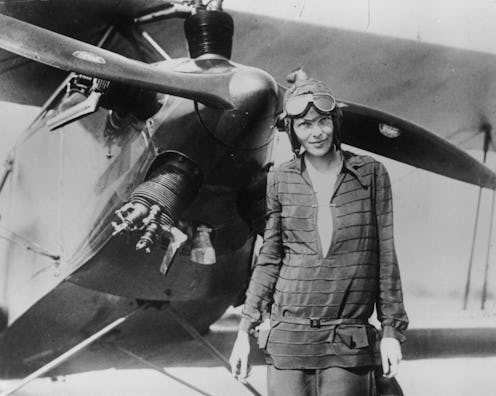Life
You Have To Read Amelia Earhart's Inspiring Letter
When I was 13, I became briefly obsessed with Amelia Earhart after reading a biography of her life. I can only imagine how I would have reacted at that age if I'd been in a position to get a letter from her — but in fact, in 1933, Amelia Earhart did write an inspiring letter to a 13-year-old girl from Detroit who wanted to be a pilot just like Earhart herself. Not only that, but the letter is now for sale by The Raab Collection. So if your childhood dreams were anything like mine and you happen to have a spare $15,000 lying around, you could potentially make your inner child very happy.
Amelia Earhart is one of the most famous aviators in history and one of the first women to ever break into the field. Along with other legendary pioneers like Bessie Coleman, Ruth Nichols, Beryl Markham and more, her name will live on forever in the history books, decades after she tragically disappeared during an attempted flight around the world. And all these years later, her advice about breaking into the industry still strikes a chord.
Earhart's letter doesn't talk down to the aspiring pilot or paint a rosy picture for her. She gives very practical advice about the steps needed to be a pilot and advises her that although no airlines employed female pilots yet, that there were plenty of ways to get your foot in the door of the industry as a secretary or factory worker. And plenty of women made a good living in the air by teaching or in flying airplanes from the factories to purchasers.
"As far as women's opportunities in flying go, I think they will improve as they have in all industries," she writes. "Just now there are no pilots on the regular scheduled air lines. Some day I expect there will be."
Sadly, although women have more opportunity in aviation now than they did in Earhart's day, today, only three percent of pilots worldwide are women. Here in the United States, the number of women holding an other-than-student pilot's license has remained virtually unchanged since the 1980s. So Earhart's letter isn't just a testament to how far women have come in aviation; it's also inspirational on its own merits still today.
True, the path to being a pilot no longer requires a trip to a Department of Commerce physician, but women are still trying to break into a male-dominate industry when it comes to becoming pilots. And Earhart's practical, level-headed tone should inspire any up-and-coming female pilots out there to tackle whatever obstacles are before them and to get creative if need be.
